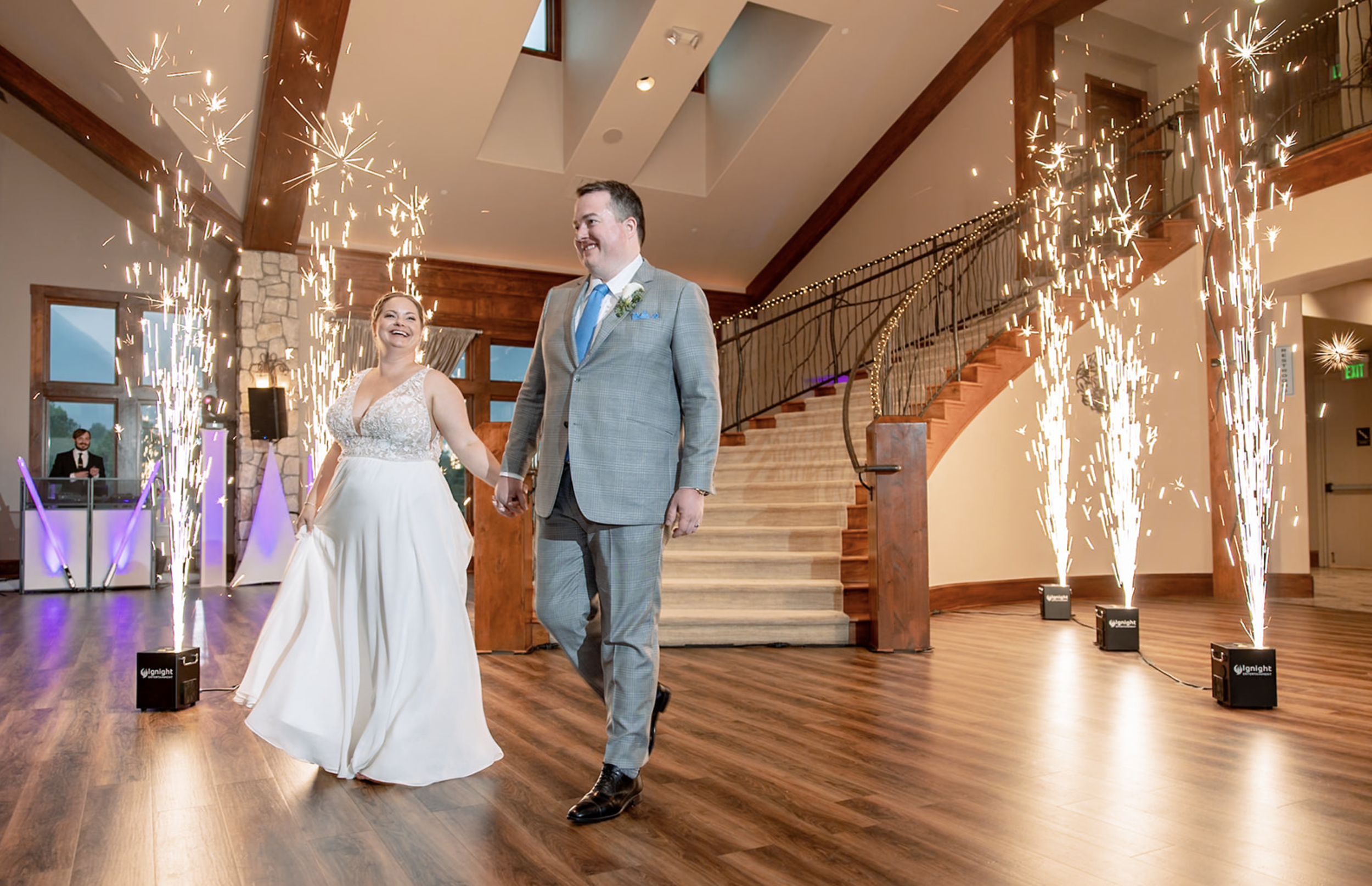How to Professionally Photograph Cold Sparks
Cold sparks add a magical, high-energy moment to your celebration—but capturing them on camera requires the right technique. Whether you're a professional photographer or a couple planning your big day, this quick guide covers everything you need to know to beautifully and safely shoot cold sparks. Share this with your photographer to ensure this epic experience is captured in all of it’s lit glory!
Tips for Photographing Cold Sparks From Elevate Photography
Capturing cold sparks can result in stunning, high-impact images—but it takes a little prep to get them just right. Here’s our go-to method for photographing this moment effectively:
1. Test and Underexpose Ahead of Time
Take a few test shots before the moment begins. Cold sparks give off a lot of light, so it’s essential to underexpose your image. We recommend setting your exposure about 2 stops below the meter reading. Remember: you can recover shadows, but not blown highlights.
2. Use Both On-Camera and Off-Camera Flash
We use a combination of one on-camera flash and one off-camera flash.
The on-camera flash is set to TTL and dialed down at least 2 stops to compensate for the bright sparks.
The off-camera flash is kept at a low power setting to avoid overexposing the scene.
3. Drag the Shutter for Motion and Atmosphere
To capture the energy and movement of the cold sparks, slightly slow your shutter speed. We usually shoot between 1/60 and 1/125. This gives a subtle light trail while keeping the couple in focus.
4. Plan Your Composition Intentionally
Think through your framing in advance. You’ll typically need to shoot wider than normal to fully capture the effect, but you can still be intentional with symmetry, negative space, and leading lines to create a strong composition.
5. Communicate with the DJ or Planner
Make sure you know exactly when the cold sparks will go off. Coordinating with the DJ or planner helps ensure you’re ready and in the right spot at the right time. At Ignight Entertainment, our team tests the performance with the fire marshall before guests arrive. This is a great time to do test shots of the cold spark units.
6. Use a Wider Lens
Cold sparks usually take up more space than you expect, so opt for a wider lens—something in the 24mm to 35mm range works great to capture the full effect and environment. For most venues in Colorado, cold sparks must be at least 15 feet away from guests, which is another factor to consider when choosing your lens.
7. Stay Safe
Keep a safe distance and be aware of where the cold sparks are positioned. Avoid getting too close to the effects or putting yourself or your gear in their path.
Many thanks to Elevate Photography for these beautiful photos of our cold sparks, and for these helpful tips on how to professionally photograph cold sparks.
Photo: Elevate Photography

